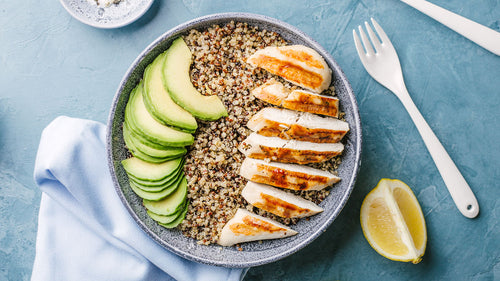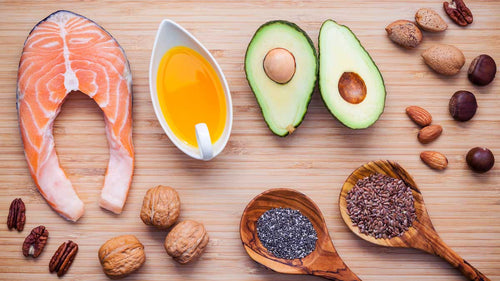
How Does Fat End Up In Your Liver?
Published on Thursday, April 04, 2024 by Andy De SantisAn Intro To All Things Fatty Liver Disease
Recent, robust, and far-reaching data puts the prevalence of fatty liver disease at 1 in 3 adults globally.
That’s a staggering figure and speaks to the fact that fatty liver is both a condition of the present and the future.
Speaking of chronology, I’ve spent the past two and a half years immersing myself in everything related to this condition.
The journey started with the publication of my book, The Essential Diet For Fatty Liver Disease, in the spring of 2022, and the road since then has been paved with all things liver science.
Which brings us to the goal of today’s article:
Helping you understand what fatty liver disease is, how it happens, and why it matters.
Let’s get to the good stuff.
Fatty Liver Diagnosis
The term NAFLD or [non-alcoholic fatty liver disease] is gradually being phased out in favor of the less stigmatizing term MASLD [metabolic dysfunction-associated steatotic liver disease].
Semantics aside, fatty liver disease is ultimately classified as a condition wherein greater than 5% of the liver’s weight is fat, and excessive alcohol use is ruled out as the cause.
Scientists might more articulately refer to this phenomenon as >5% of hepatocytes [liver cells] exhibiting steatosis [fat buildup].
But how does your medical team determine that you might have a fatty liver?
#1 Blood Work - Elevated liver enzyme levels suggest liver inflammation. While liver inflammation can occur for a variety of reasons, fatty liver disease is the most likely explanation by some margin.
Liver inflammation occurs in fatty liver disease due to an inflammatory response caused by fat accumulation.
#2 Imaging - Ultrasound or more advanced imaging tests like FibroScan are used to evaluate the presence of fat in the liver and determine whether it meets the diagnostic threshold.
The FibroScan machine can also determine the extent of fibrosis, a scientific term used to refer to liver scarring caused by excessive inflammation over time.
When fatty liver disease is left unmanaged, fibrosis tends to increase and can lead to the development of a more severe condition known as NASH.
What’s Actually Happening [Pathophysiology]
So far, we’ve established that liver fat accumulation is both common and problematic.
But how does it happen in the first place?
People who end up with a fatty liver generally have overlapping characteristics:
- Insulin Resistance
- Elevated blood fats [triglycerides, LDL cholesterol]
- Excessive inflammation
- Gut microbiome imbalance
Issues like these are much more likely to occur in individuals with a less-than-optimal dietary pattern who perhaps aren’t the most physically active.
Some people try to blame the totality of these metabolic shortcomings on single food items like fructose-containing beverages [soda, soft drinks] – but clearly, the multiple systems at work mean there’s more to the story than that.
The fact that multiple systems are indeed at work makes it much more complicated to nail down and explain the exact reason why insulin resistance and the other factors described above contribute to liver fat accumulation – but I’m going to try anyway using a greatly oversimplified flow explanation listed below.
- Insulin suppresses the release of fatty acids
- This effect is lessened when someone is insulin-resistant
- This means that fatty acids get released from their stored form in the body and enter the bloodstream
- An increase in fatty acids in the bloodstream increases the risk they end up where they shouldn’t be – in the liver.
Of course, there is a lot more to it than this, but nonetheless, I’m hopeful this description helped.
Why Does This Matter?
My professional experience working with fatty liver disease tells me that the idea that something isn’t quite right with one’s liver scares them more than other common concerns like high blood pressure or high cholesterol.
These concerns are warranted because I look at early-stage fatty liver disease as a strong indication that things need to be done differently on the lifestyle front because the liver is such an important organ and is heavily affected by lifestyle choices.
When you end up with a fatty liver diagnosis, it is very much a sign that, metabolically and physiologically, things aren’t quite working as they should.
The clearest evidence for this sentiment being true is the fact that people with a fatty liver are at higher risk of future health concerns including, low testosterone [in men], certain types of cancer, pre/type 2 diabetes, and cardiovascular disease.
What Can Be Done About A Fatty Liver?
In the weeks ahead, I’ll focus on specific strategies for fighting fatty liver disease.
Ultimately, these strategies will revolve around three central tenets:
- Dietary Modification & Optimization
- The Strategic Use Of Science-Backed Supplements
- An Increase In Moderate-Intensity Resistance And/Or Cardiovascular Activity
There will be a lot for us to explore together in these areas, but for now, I want to start by suggesting that we become more familiar with what it means to consume a Mediterranean Diet.
The Med Diet is, by a scientific margin, the most science-supported approach to reduce liver fat accumulation – even if little to no weight loss accompanies it.
Which brings me to today’s closing message.
It’s Not Just About Weight Loss
I cannot adequately describe the extent to which it pains me to see my fatty liver clients using weight loss as the sole indicator of their success in fighting back against a fatty liver.
It is undeniably true that some people will lose weight while making lifestyle changes that must be made to improve liver health.
Losing weight is not a universal outcome of improving liver health through lifestyle changes, though, and there is an ABUNDANCE of evidence demonstrating that changes in the three primary lifestyle categories discussed above can improve liver health even in the absence of weight loss.
I wanted to make this point abundantly clear because if you are out there trying your best but are discouraged by a lack of weight loss, you must know in no uncertain terms that you are still doing exceptional work.
More to come in this area soon.
- Armandi, A., Rosso, C., Caviglia, G. P., & Bugianesi, E. (2021). Insulin Resistance across the Spectrum of Nonalcoholic Fatty Liver Disease. Metabolites, 11(3), 155. https://doi.org/10.3390/metabo11030155
- Xue, Y., Peng, Y., Zhang, L., Ba, Y., Jin, G., & Liu, G. (2024). Effect of different exercise modalities on nonalcoholic fatty liver disease: A systematic review and network meta-analysis. Scientific Reports, 14, 6212. https://doi.org/10.1038/s41598-024-51470-4
- Younossi, Z. M., Golabi, P., Paik, J. M., Henry, A., Van Dongen, C., & Henry, L. (2023). The global epidemiology of nonalcoholic fatty liver disease (NAFLD) and nonalcoholic steatohepatitis (NASH): a systematic review. Hepatology (Baltimore, Md.), 77(4), 1335–1347. https://doi.org/10.1097/HEP.0000000000000004
How do you fix insulin resistance lower LDL lower inflammation. I’ve got hypothroid which is a common risk factor for nafld
I am interested in learning more about curing fatty liver.
Leave a comment on this article:
-
Andy De Santis
MPH, RD

Embracing the Mediterranean Diet for IBS: Flavorful Low FODMAP Choices

Do Omega-3 Fatty Acids Enhance The Gut Microbiome?

Prebiotic Fiber- The Best Kept Gut Health Secret?

Digital Detox Guide: Unplug and Recharge for Happiness

Conquering Common Age-Related Gut Changes with Smart Food Choices

Springtime Wellness: Coping with Allergies, GERD, and IBS





